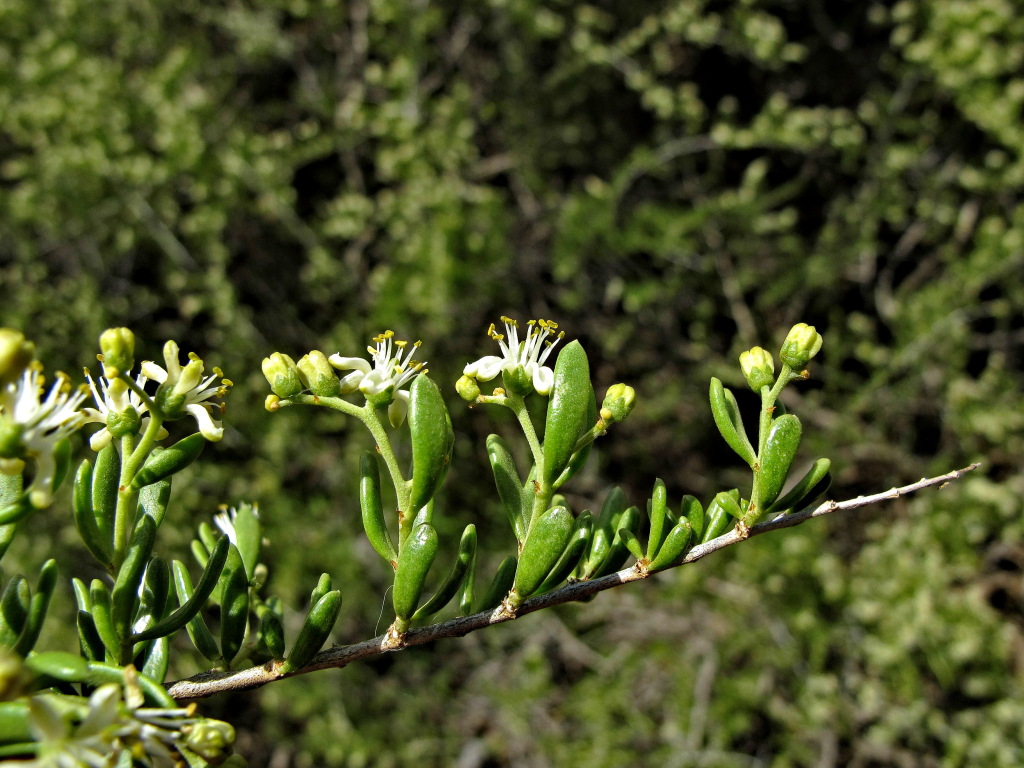Nitrariaceae
Annual and perennial herbs or prostrate to ascending shrubs, often spiny and pubescent. Leaves alternate, rarely opposite, spirally arranged or clustered, simple or deeply and irregularly pinnatisect, often fleshy or succulent, petiolate or subsessile; stipules small, often caducous. Inflorescences terminal or leaf-opposed, in loose cymes or flowers solitary. Flowers bisexual or sometimes functionally unisexual; sepals 4–5, imbricate, persistent in fruit; petals 4–5, induplicate-valvate; stamens 15 (rarely 4 or 10), without appendages, anthers 2-celled, basifixed, dehiscence latrorse; disc present, small, fleshy; ovary superior, 3–4- or rarely 6-celled, ovoid, oblong or pyramidal, ovules 1–many per cell, axile, pendulous, style simple, stigma lobed. Fruit a berry, drupe or loculicidal capsule; seeds with or without endosperm.
4 genera with 17 species from south and east Europe, the western Sahara to central Asia, and Mexico; 2 species in 2 genera in Australia.
Genera of this family have been included within Zygophyllaceae. However, phylogenetic analyses of DNA sequence data show them to form a lineage in the Sapindales rather than within the Zygophyllales, the order that Zygophyllaceae belongs to (Sheanan & Chase 1996; Gadek et al. 1996; Savolainen et al. 2000). Some authors (e.g. Sheahan 2011) treat Nitrariaceae as comprising only Nitraria with the other genera placed in Tetradiclidaceae based on fruit and leaf differences from Nitraria.
 Spinning
Spinning

